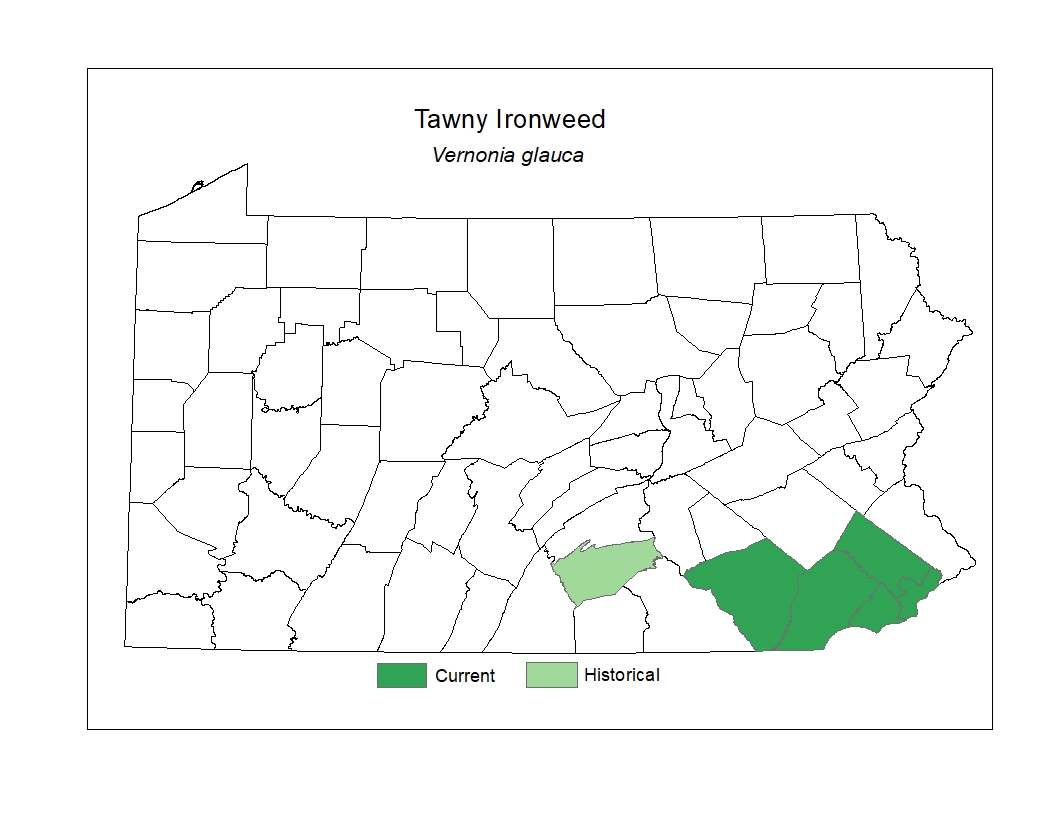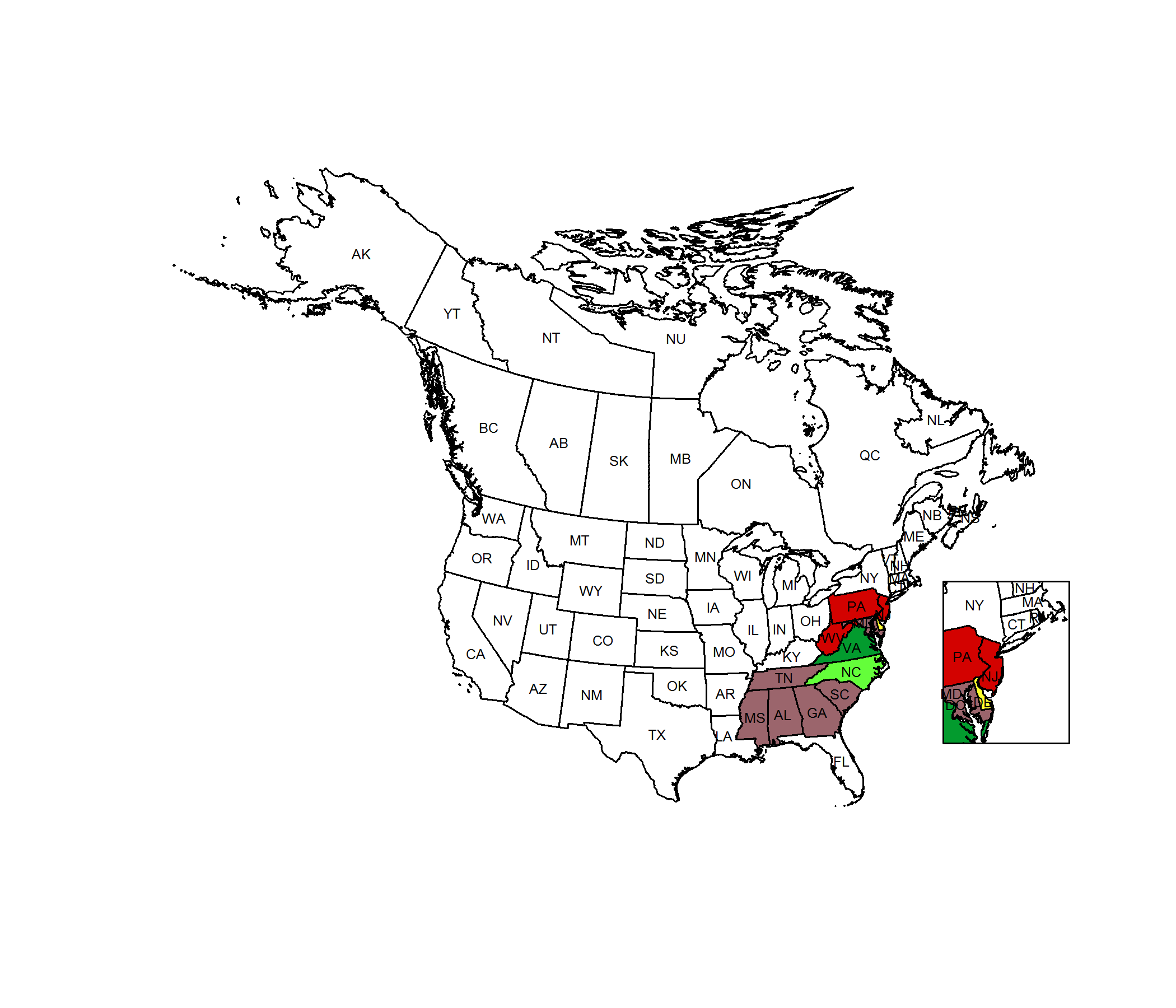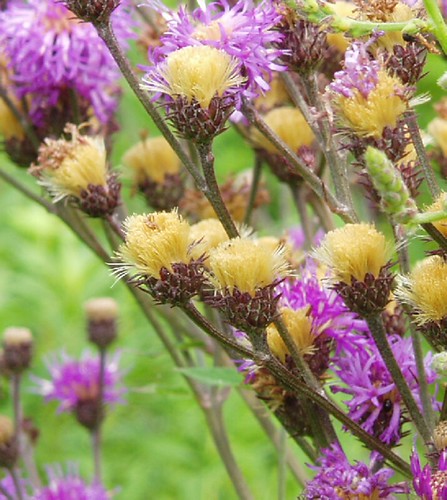 Species Factsheets
Species Factsheets
Vernonia glauca
Tawny Ironweed
State Status: Pennsylvania Endangered (PE)
PBS Status: Pennsylvania Endangered (PE)
Federal Status:
Global Rank: G5
![]() rank interpretation
rank interpretation
State Rank: S1
Did You Know?
The root of this species is a blood tonic that can be used to regular menstration, relieve pain post childbirth or treating stomach bleeding or aches.
Description
Tawny ironweed (Vernonia glauca) is a perennial herb that may grow to 1.5m in height. The leaves are alternately-arranged, narrowly egg-shaped to oblong in shape, noticeably paler below, with short-pointed tips and bases that taper to a short petiole. The flowers, which appear from July to October, are purplish and are grouped into dense flowering heads, which are clustered at the top of the stem in a branched, flat or roundtopped grouping. This species has lighter-colored bristles at the top of its fruits than does the much more common species Vernonia noveboracensis.
Rank Justification
Critically imperiled in the nation or state because of extreme rarity (often 5 or fewer occurrences) or because of some factor(s) such as very steep declines making it especially vulnerable to extirpation from the state.
PABS
The PA Biological Survey considers tawny ironweed to be a species of special concern because of the few occurrences that have been recently confirmed. It has a PA legal rarity status and a PABS suggested rarity status of Endangered. Fewer than ten populations are currently known from the state.
Habitat
It grows in successional clearings, dry fields, and upland forests.
Survey Dates
Flowers July - October
Distribution
In Pennsylvania, it reaches a northern limit of its range and has been documented in a few southeastern counties.

Threats
The currently known populations of tawny ironweed in the state are threatened by human-related habitat loss, natural succession, invasive species, and the indiscriminate spraying of herbicides.
Management
Given the preference of the species for open habitats, active management is usually required to maintain the proper successional stage.
Conservation Status Map

NatureServe. 2017. NatureServe Explorer: An online encyclopedia of life [web application]. Version 7.1. NatureServe, Arlington, Virginia. Available https://explorer.natureserve.org.
https://practicalplants.org/wiki/Vernonia_glauca
- NatureServe. 2018. NatureServe Explorer: An online encyclopedia of life [web application]. Version 7.1. NatureServe, Arlington, Virginia. Available at https://www.natureserve.org/explorer
- Pennsylvania Natural Heritage Program. 2018.
- Rhoads, A.F. and W.M. Klein, Jr. 1993. The Vascular Flora of Pennsylvania. American Philosophical Society, Philadelphia, Pennsylvania. Rhoads, A.F. and T.A. Block.
- 2007. The Plants of Pennsylvania: An Illustrated Manual. 2nd edition. University of Pennsylvania Press, Philadelphia, Pennsylvania.







